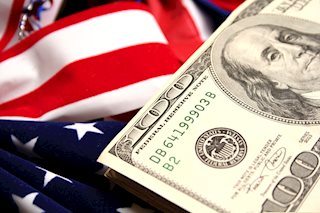US Dollar stabilizes, markets turn cautious as Jackson Hole Symposium kicks off
|
- USD sellers take a breather after four sessions of losses.
- Markets digest weekly Jobless Claims and August PMIs.
- Rate cut expectations remain high ahead of Powell’s words on Friday.
The US Dollar (USD), measured by the US Dollar Index (DXY), indicated an incline above the 101.00 level during Thursday's trading session. This occurs in a market environment, closely attending Chair Jerome Powell's Friday speech, while markets assess the release of recent Jobless Claims and S&P PMIs.
While market sentiment regarding future monetary policy decisions remains quite consistent, the economic outlook of the US suggests continued growth above trend. This unveils that the market possibly is overestimating the pricing for an aggressive easing once again.
Daily digest market movers: US Dollars gains traction, investors eye Jackson Hole Symposium for direction
- Markets await fresh directions on Jerome Powell’s words at the Jackson Hole Symposium on Friday to get a confirmation on whether the Federal Reserve (Fed) will cut in September.
- The Minutes from July's FOMC meeting were perceived as dovish, with several officials observing that recent progress on inflation and higher unemployment provides a feasible case for an interest rate range reduction of 25 basis points.
- The market still prices in 100 bps of total easing by year-end, but those odds will likely change after Powell’s directions.
- On the data front, the number of US citizens applying for unemployment insurance benefits rose by 232K in the week ending August 17, according to Thursday's US Department of Labor (DoL) report.
- This figure was slightly above the initial consensus of 230K and exceeded the previous weekly gain of 228K.
- The August flash estimate for the US S&P Global Composite PMI slightly slipped to 54.1 from 54.3 in July.
- However, this outperformed market expectations of 53.5, indicating that the business activity in the US's private sector continues to expand robustly.
- Concurrently, the S&P Global Manufacturing PMI plummeted to 48, illustrating ongoing contraction, while the Services PMI saw a minor rise to 55.2.
DXY technical outlook: Bearish momentum cools as the market recovers
DXY’s technical outlook sees a shift as the bearish momentum slows down, providing the market with a respite. Indicators took a hit this week with the Relative Strength Index (RSI) landing in oversold territory, though it's recovering. The Moving Average Convergence Divergence (MACD) currently prints flat red bars, hinting at a flattening bearish momentum. Hence, the overall technical signals suggest that bears are recuperating after propelling the index to its lowest level in a year.
Support Levels: 101.50, 101.30, 101.20
Resistance Levels: 102.00, 102.50, 103.00
Interest rates FAQs
Interest rates are charged by financial institutions on loans to borrowers and are paid as interest to savers and depositors. They are influenced by base lending rates, which are set by central banks in response to changes in the economy. Central banks normally have a mandate to ensure price stability, which in most cases means targeting a core inflation rate of around 2%. If inflation falls below target the central bank may cut base lending rates, with a view to stimulating lending and boosting the economy. If inflation rises substantially above 2% it normally results in the central bank raising base lending rates in an attempt to lower inflation.
Higher interest rates generally help strengthen a country’s currency as they make it a more attractive place for global investors to park their money.
Higher interest rates overall weigh on the price of Gold because they increase the opportunity cost of holding Gold instead of investing in an interest-bearing asset or placing cash in the bank. If interest rates are high that usually pushes up the price of the US Dollar (USD), and since Gold is priced in Dollars, this has the effect of lowering the price of Gold.
The Fed funds rate is the overnight rate at which US banks lend to each other. It is the oft-quoted headline rate set by the Federal Reserve at its FOMC meetings. It is set as a range, for example 4.75%-5.00%, though the upper limit (in that case 5.00%) is the quoted figure. Market expectations for future Fed funds rate are tracked by the CME FedWatch tool, which shapes how many financial markets behave in anticipation of future Federal Reserve monetary policy decisions.
Information on these pages contains forward-looking statements that involve risks and uncertainties. Markets and instruments profiled on this page are for informational purposes only and should not in any way come across as a recommendation to buy or sell in these assets. You should do your own thorough research before making any investment decisions. FXStreet does not in any way guarantee that this information is free from mistakes, errors, or material misstatements. It also does not guarantee that this information is of a timely nature. Investing in Open Markets involves a great deal of risk, including the loss of all or a portion of your investment, as well as emotional distress. All risks, losses and costs associated with investing, including total loss of principal, are your responsibility. The views and opinions expressed in this article are those of the authors and do not necessarily reflect the official policy or position of FXStreet nor its advertisers.